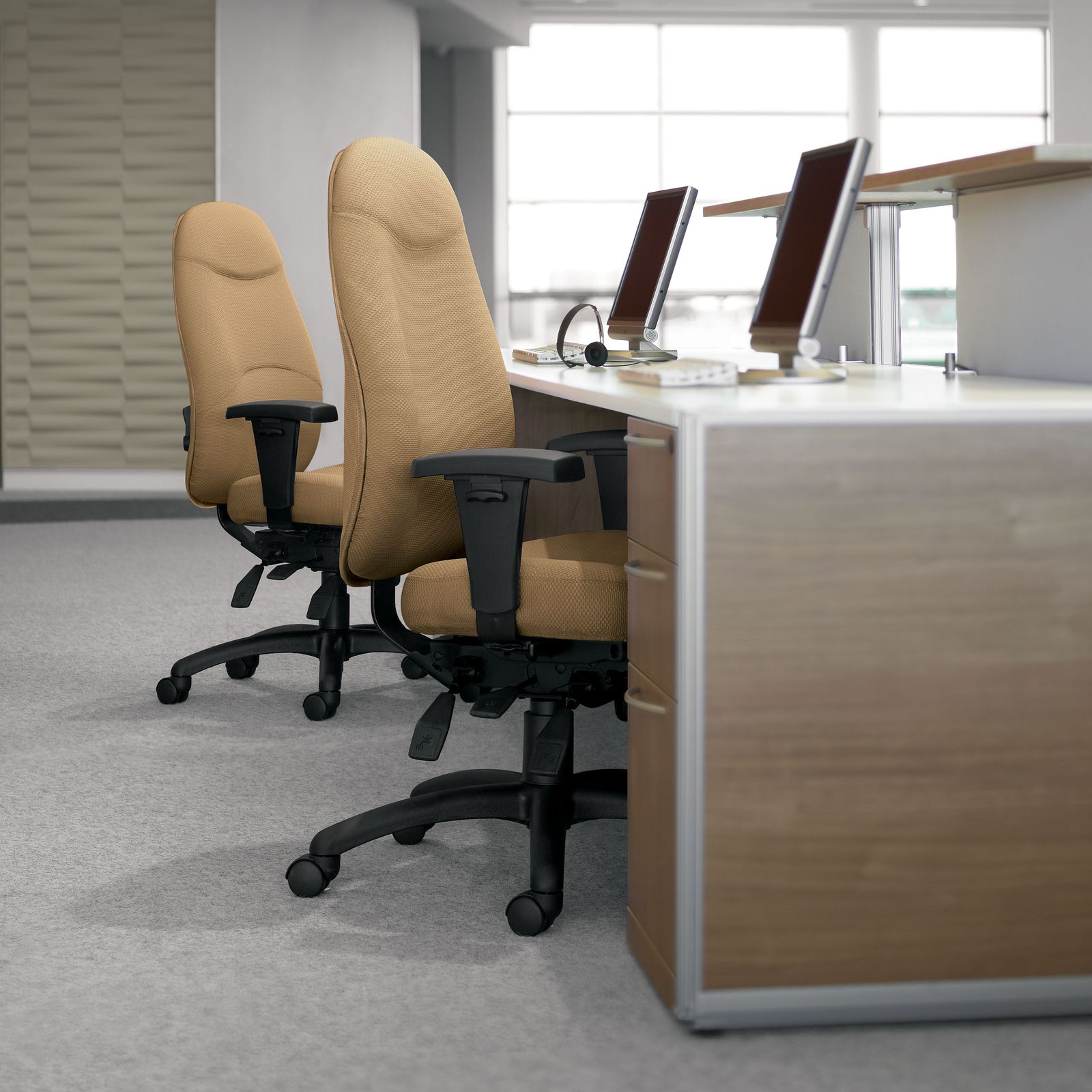Consider These Ten Features When Buying a Desk Chair

Coworking Space Furniture
As today’s businesses move toward dynamism and flexibility, coworking spaces have become a popular choice for remote workers, startups, and even small corporate teams.
But what sets a coworking space apart from a regular environment is its interior design and office furniture Houston.
Coworking furniture should be designed to bring comfort, productivity, and, of course, beauty to the workplace at the same time.
At Collaborative Office Interiors, we have designed specialized ergonomic furniture for collaborative workspaces with an eye on the future of businesses.
These products are designed to promote teamwork, boost creativity, and create an inspiring environment.
So if you are a business owner in Houston and are looking for a productive environment where people feel relaxed and motivated, we have the solution.
Our ideal solutions are exactly what you need to create a modern, comfortable, and flexible workspace.
Get help from us now and take the first step towards improving your workspace.
Our Coworking Furniture Category
Choosing the right office furniture for a coworking workspace plays a vital role in creating an environment where employees can work with focus, collaboration, and innovation.
Below are categories of essential types of furniture designed for different uses in a shared workspace.
Get help from us now and take the first step towards improving your workspace.
Our Coworking Furniture Category
Choosing the right office furniture for a coworking workspace plays a vital role in creating an environment where employees can work with focus, collaboration, and innovation.
Below are categories of essential types of furniture designed for different uses in a shared workspace.
For instance, typical coworking space furniture might consist of couches and coffee tables in one area, collaborative desks and benching in another, collaborative seating or acoustic seating in another, and a few private “huddle spaces” to facilitate meetings.
1- Office Desks
- Height-adjustable desks: These ergonomic desks allow users to switch between sitting and standing during work hours, which helps maintain physical employee health.
- Hot Desking: Flexible, public, and modular desks in a hybrid office space, suitable for people using the space on a temporary or part-time basis.
· Team Tables: Large tables for team collaboration, ideal for group work and shared projects.
2- Seating Options
- Ergonomic chairs: Designed for long-term user comfort and support for the back and neck, suitable for people who sit at a desk for long hours.
- Task Chairs: Compact and movable chairs for quick tasks or use in different parts of the office layout.
- Lounge Chairs and Sofas: This coworking furniture creates a creative and intimate environment for informal meetings, relaxation, or brainstorming sessions.
· Booth Seating: This ergonomic office chair is suitable for creating a relatively separate space for concentration or two-person conversations, while maintaining an open space.
3. Lumbar Support
Storage solutions
Personal movable lockers, filing cabinets, drawers, and wheeled shelves with modular capabilities are the best piece of furniture for accessing documents and records in coworking spaces.
Meeting Tables and Conference Furniture
- Conference tables: Suitable for group meetings, presentations, or team brainstorming in a coworking workspace.
- Adjustable tables for meetings: Possibility of arrangement and changing dimensions to suit the type of meeting, from small meetings to training workshops
- Folding tables: These tables save space and are easy to set up, making them perfect for events or casual meetings.
Breakroom and Social Seating
- Bar Stools and High Tables: These comfortable seating options are other coworking furniture that are suitable for social environments and informal conversations between colleagues.
- Coffee Tables and Chairs: This ergonomic furniture creates a functional and comfortable workspace for dining, friendly conversations, or intimate meetings.
Private Work Pods and Acoustic Solutions
- Soundproof Pods: In a collaborative environment, these products are perfect for phone calls, online meetings, or high-level concentration away from the hustle and bustle of the environment.
- Acoustic Panels: Due to the presence of noise in coworking environments, the use of acoustic panels installed on walls or ceilings is suitable for reducing noise in open spaces and increasing the peace of the environment.
- Acoustic Phone Booths: Small, private spaces for calls, without disturbing others.
Flexible and Modular Furniture
- Modular Workstations: Other types of furniture are modular workstations, which are easy to change and move, making them suitable for hot desks or group projects.
- Modular Sofas and Lounges: Customizable layouts for group meetings or breaks, with the ability to adapt to the changing needs of users.
Why Choose COI?
Expertise & Experience
Collaborative Office Interiors has been working in the field of furnishing coworking offices in Houston for many years, and this valuable experience has allowed us to fully understand the specific needs of such environments.
We understand that every workspace has different needs, depending on the type of user, members, and work style.
Therefore, relying on specialized knowledge and previous successful projects, we can suggest solutions that are exactly in line with your goals and office environment.
From ergonomic design to choosing the right coworking furniture, we guide you every step of the way to ensure your ergonomic workspace is at its best, both functionally and aesthetically.
Commitment to Quality
In the furniture selection process, our expert team offers ergonomic furniture that is at the highest level in terms of beauty, design, build quality, and durability.
Using high-quality materials, ergonomic standards, and complying with office aesthetic principles in furniture production are our priorities.
This commitment to quality gives you peace of mind that the furniture you choose will be both durable in the long term and comfortable and efficient in everyday use.
Professional Customer Service
We are not just a provider of coworking furniture; we are your partner in designing an effective and inspiring workspace.
We are with you every step of the way, from the moment you decide to furnish your coworking space until the last piece is in place.
Our experienced team listens to your needs and gives you the best recommendations by providing practical suggestions and reviewing designs.
Even after delivery, I am available for support and after-sales service.
COI’s goal is to make your coworking space look beautiful and work exactly as it should for you and your members.
Fast Delivery and Professional Installation
We understand the importance of your time and your project, so we make the process of delivering coworking furniture and installing it in your workspace quick and hassle-free.
Our expert team will transport the furniture to your location in the shortest possible time and install it according to standard instructions.
Furniture installation is carried out by professional experts with care to ensure that everything is in place and works as well as possible.
Therefore, at COI, we ensure that you quickly achieve a fully equipped and functional workspace by using expert and efficient teams.
If you’re ready to take your effective coworking space to a new level of modernity and convenience, act now!
So that we can create an inspiring and efficient work environment by selecting furniture specifically designed for the collaborative space.
Try our budget calculator, explore Houston’s most exciting collection of collaborative office furniture, or learn more by speaking to the office design experts at Collaborative Office Interiors today.
Visit our showroom in Houston now or contact us to take advantage of our services and products for furnishing your coworking space.

John Ofield is the owner of Collaborative Office Interiors. Houston’s trusted source for premium office furniture, office cubicles, demountable walls, office desks and tables, and complete workspace solutions. With more than 40 years of experience, he combines deep product knowledge with hands-on space-planning expertise to create ergonomic, productivity-focused work environments for businesses across Southeast Texas.




